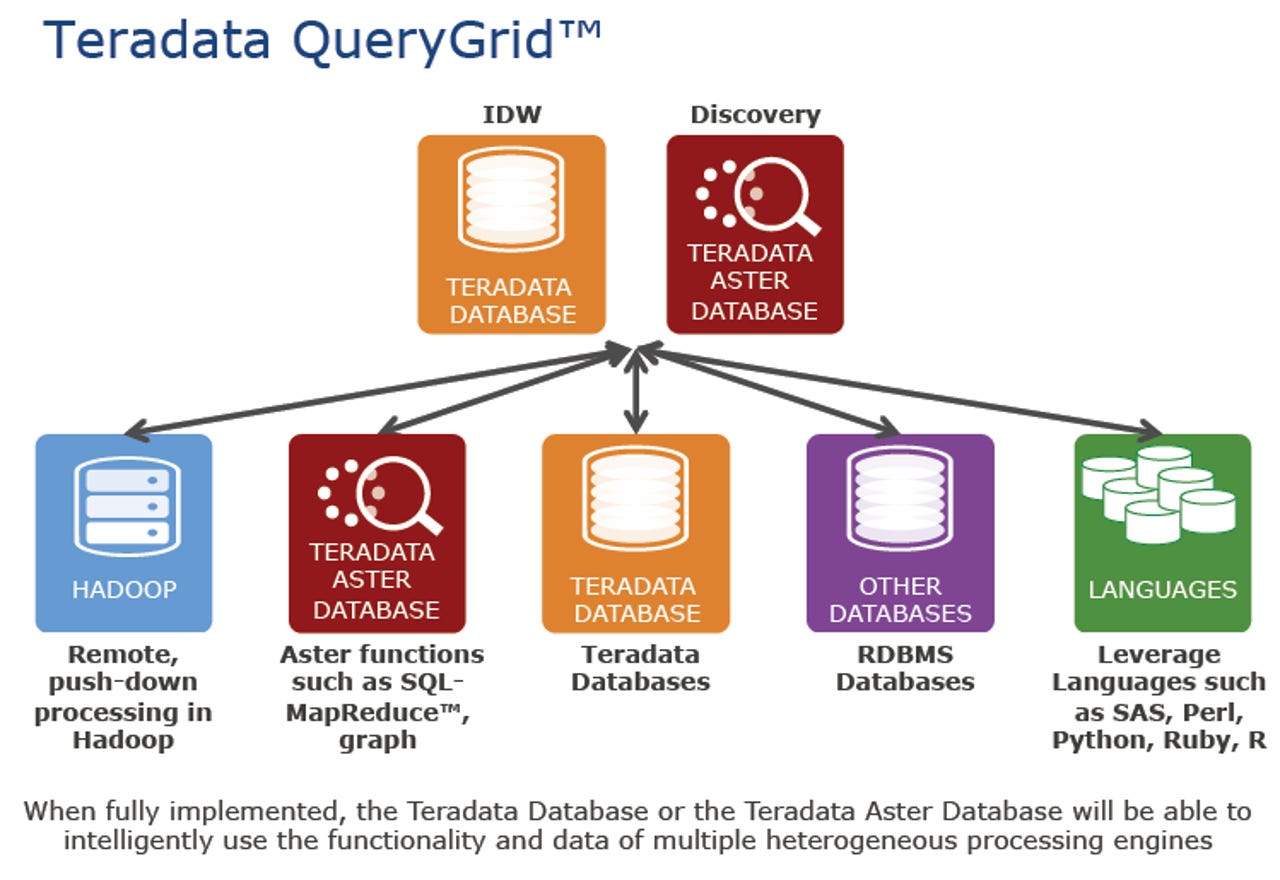Teradata launches QueryGrid, one workflow for big, little data

Teradata on Monday launched a technology called QueryGrid, which aims to surface analytics from multiple systems storing both big and little data.
At its Teradata Universe conference in Prague, the company rolled out its latest database, which builds in hooks to the Internet of things, a new version of its EDW 6750 data warehouse appliance, and QueryGrid.
Of that lot, QueryGrid is most likely to be the most interesting to Teradata customers. Scott Gnau, president of Teradata Labs, said QueryGrid is part of what the company sees as the next generation data architecture that melds traditional data warehousing and transactional analytics with big data and Hadoop clusters.
"We want to take analytics and then extend it to things like Web log data with queries in one workflow," said Gnau. One typical use case would be to use QueryGrid to surface how customers with the highest lifetime value interact with a company's Web site.
Gnau added that customers ultimately don't care where data is stored and processed, but want the insights from it all. The promise of QueryGrid is that it can utilize the SQL database skills in many enterprises and use existing investments to surface data without moving it around.

The effort behind QueryGrid is part of Teradata's ongoing move to bridge the divide between data warehouses, the core of the company's business, with big data, which is likely to take analytic workloads.
Latest review
To that end, Teradata 15, the company's latest database, adds support for various machine data as well as things like 3D geospatial analysis. Teradata 15 will also support JSON data types, which are used for information from machines. Languages such as Perl and Python will also be supported. The main message is that Teradata wants to be hip for developers.
And finally Teradata rolled out its 6750 system, which has eight times the memory of its predecessor, has more Flash in SSD, and delivers faster response times.
Overall, Teradata's QueryGrid sounds promising, but the company is facing stiff competition and the data warehouse market is in flux. Cowen analyst Peter Goldmacher sums up the situation:
On the emerging vendor side, the three primary Hadoop distros, Cloudera, Hortonworks, and MapR are flush with cash and selling aggressively into an increasingly aware and receptive end market. The legacy vendors are also competing aggressively as SAP is flooding the market with HANA noise which is likely to slow down sales cycles, and Oracle continues to push Exadata in a data consolidation play. Importantly, the Teradata model is also showing signs of strain from internal competition as many high end product opportunities are being cannibalized by mid range boxes and Aster.